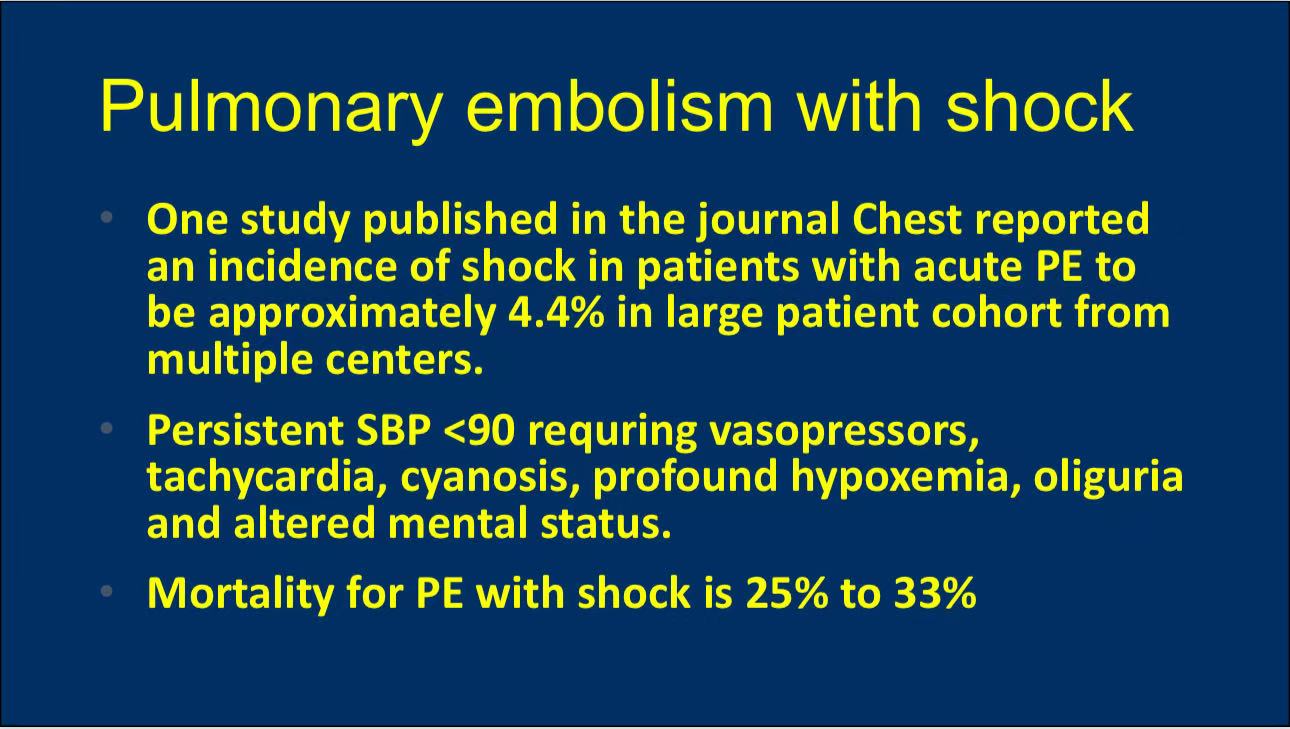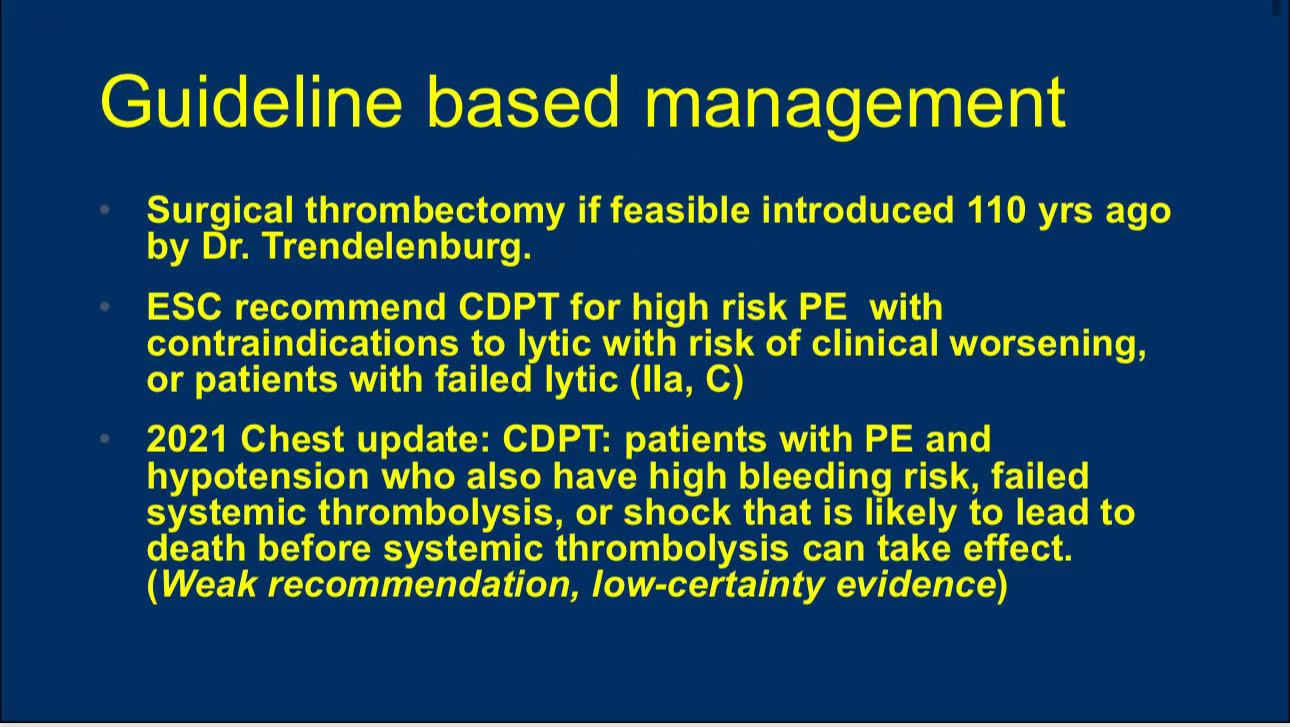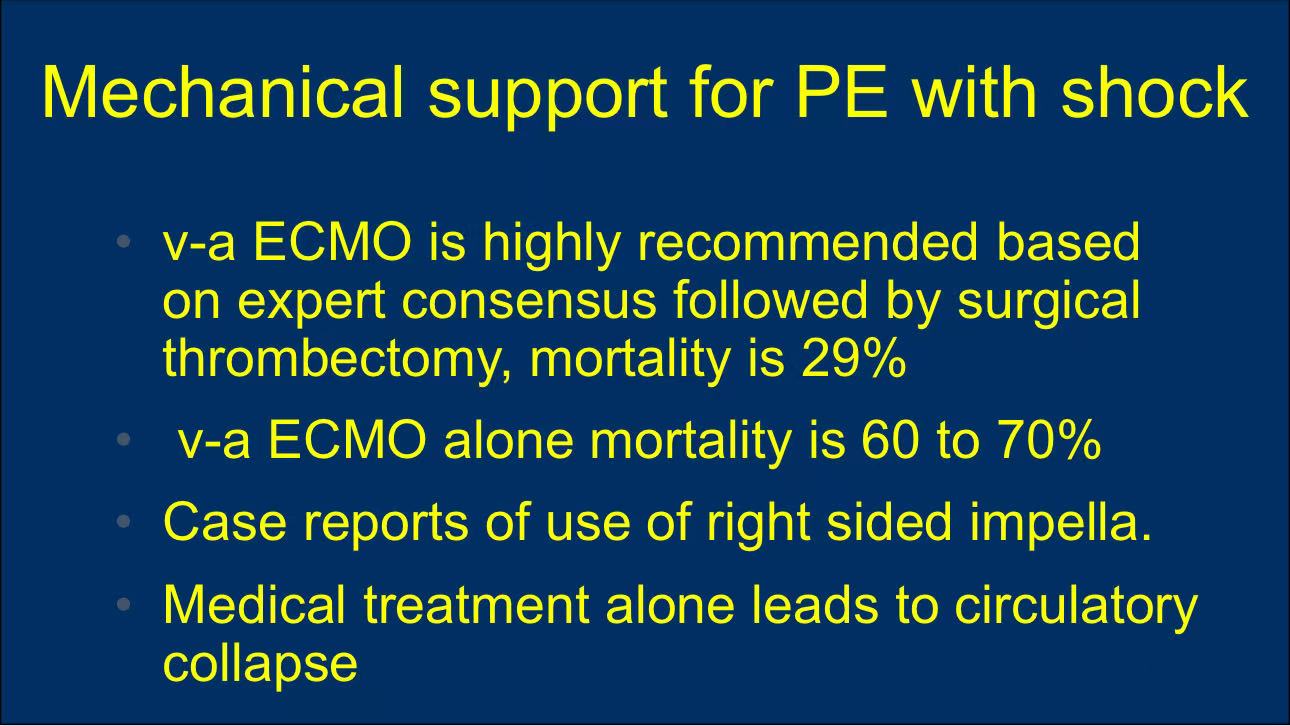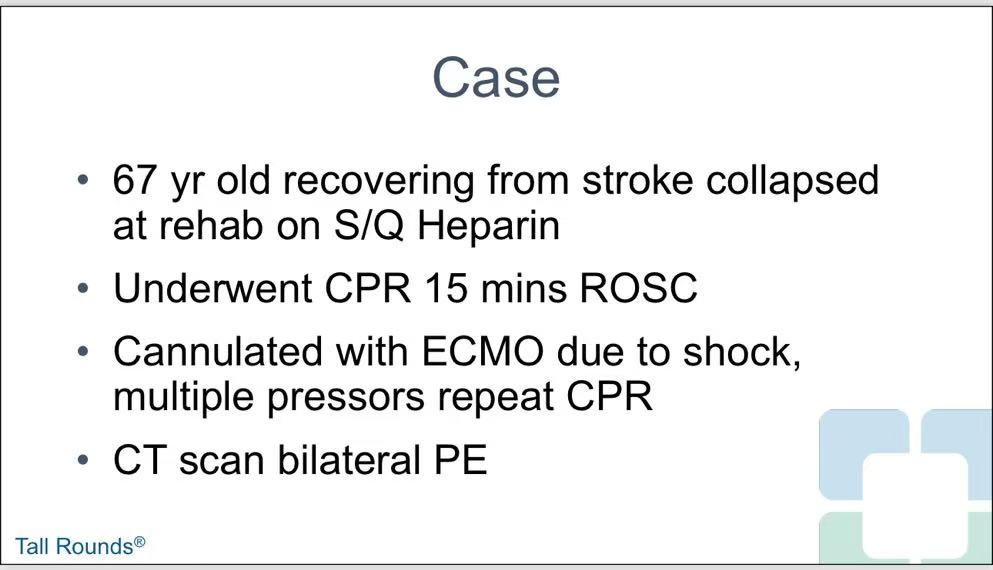Author: Dr. Aravinda Nanjundappa
Institution: Director, Peripheral Interventions, Cleveland Clinic, USA
Summary
This presentation focuses on the treatment of acute pulmonary embolism (PE) with shock using thrombectomy, based on the latest data from the CCF Pulmonary Embolism Response Team (PERT). It examines the efficacy of mechanical thrombectomy, surgical thrombectomy, and other interventional techniques in high-risk PE patients. The findings indicate that mechanical thrombectomy is highly effective in reducing procedural time, minimizing bleeding risks, and improving survival rates, especially when combined with VA ECMO, which significantly increases success rates.
Clinical Features of Acute PE with Shock
•Clinical Characteristics: Acute PE with shock presents with persistent hypotension (SBP<90 mmhg="">

•Imaging Findings: Imaging of patients with acute PE and shock typically shows right ventricular and right atrial dilation and dysfunction, elevated pulmonary artery pressures, and impaired left heart function.

Thrombectomy Treatment Strategies
• Mechanical Thrombectomy: Mechanical thrombectomy is a non-thrombolytic treatment particularly suitable for patients who cannot undergo or have failed thrombolytic therapy. CCF PERT data shows that devices such as Inari and Penumbra have a high success rate in PE treatment, with an average procedural time of 68 minutes and no significant device-related complications.

• Surgical Thrombectomy and VA ECMO: For patients who cannot undergo mechanical thrombectomy, VA ECMO and surgical thrombectomy provide effective alternatives. In a small-scale study, the mortality rate for VA ECMO combined with surgical thrombectomy was 29%, while standalone VA ECMO had a mortality rate between 60% and 70%.

Case Studies
• Case 1: A 42-year-old male with a history of developmental delay and epilepsy showed significant improvement within 72 hours after mechanical thrombectomy, achieving a 95% pulmonary artery thrombus clearance rate.

• Case 2: A 67-year-old male developed PE during stroke recovery and successfully recovered after undergoing VA ECMO and mechanical thrombectomy, with no major post-operative complications.

Conclusion
1. Patients with acute PE and shock face a high mortality risk, but mechanical thrombectomy combined with VA ECMO offers an effective treatment option.
2. Mechanical thrombectomy has demonstrated high success rates in high-risk PE patients, with shorter procedural times and reduced reliance on thrombolytics, thereby minimizing bleeding risks.
3. As technology advances, future PE treatment will increasingly focus on early intervention and the use of multiple interventional techniques to improve long-term survival rates.
Contact Us
•Email: endovascluar@simtomax.cn
More international information available at:
•Facebook: Vasco Knight
•Instagram: knight_vasco
Let’s safeguard health together and showcase your brilliance to the world!


